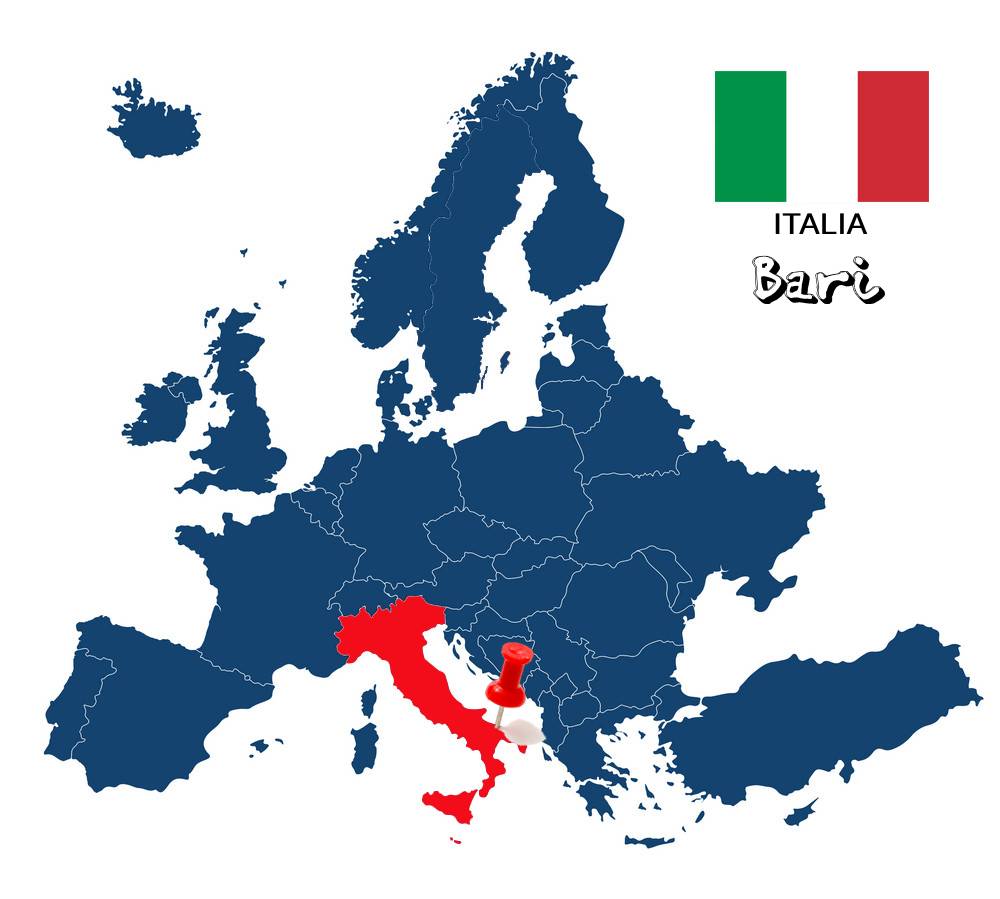
Bari is a wronged city, living in the shadow of other big cities of Italy! But if you visit it, you will be amazed by its historic buildings, its works of art, its beautiful center and the way of life of this wonderful region of southern Italy!
A few words about the city
Bari is located in southern Italy and is the capital of the homonymous province and the Apulia region, with a population of 320,475 inhabitants. It is the second most important economic center of southern Italy after Naples and is known as the port and seat of several university faculties, as well as the city of St. Nicholas. It flourished with the arrival of the Romans, and later it was the seat of the Byzantine governor of southern Italy. After the Second World War and the significant damage caused it managed to reorganize, being today a must tourist destination. So I will try to introduce Bari to you through my own eyes and share with you what I think someone who visits it for the first time should see.
Basilica San Nicola
The Basilica of Saint Nicholas (Basilica di San Nicola) began construction in 1087 and was completed more than a century later, in 1197! It is one of the first Norman churches in southern Italy and has great religious importance throughout Europe and the Christian world, both for Roman Catholics and Orthodox Christians! It is considered the most recognizable sight of the city and is an excellent example of architecture, which combines Roman architecture with that of Apulia. As you can easily understand, this particular basilica is one of the most imposing palatial cathedrals in the region. Finally, in the crypt of the church is kept the shroud of Saint Nicholas. Entry is free!
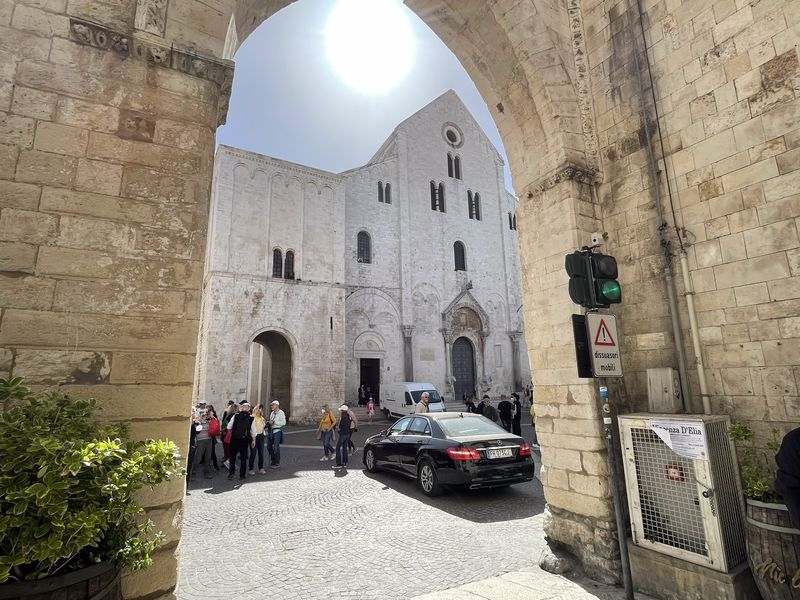
Cattedrale di San Sabino
Equally impressive is the Cathedral of Bari (Cattedrale di San Sabino), which is dedicated to Saint Sabino, Bishop of Canossa, whose relics were transferred there in the 9th century. It is the oldest temple in the city, which was built between the end of the 12th and the end of the 13th century, mainly in the last thirty years of the 12th century! It was erected on the site of the ruins of the imperial Byzantine cathedral, destroyed in 1156 by William I of Sicily, while it is still possible to observe traces of the original building in the current one! Furthermore, the interior of the church is particularly impressive and is divided into three aisles, separated from each other by columns and arcades. Entrance to the temple is free!
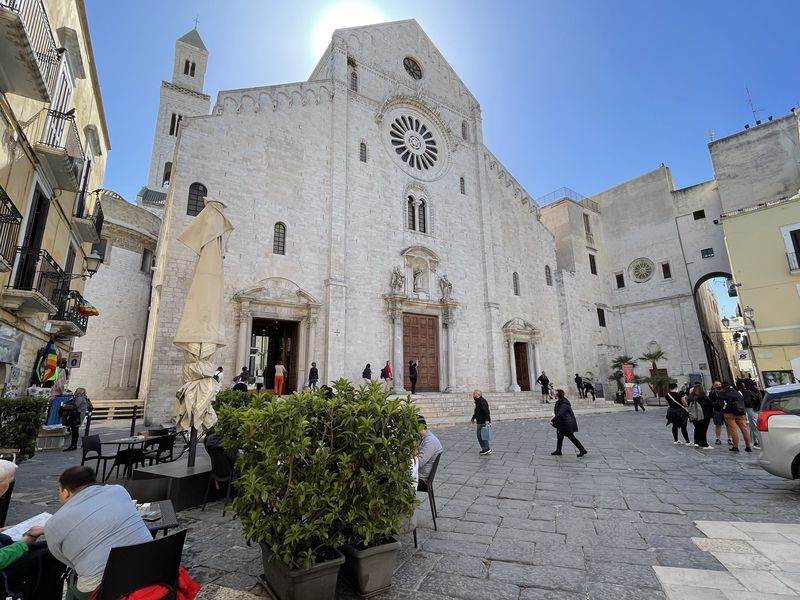
Teatro Petruzzelli
The Petruzzelli Theater (Teatro Petruzzelli) is the largest theater in the city and the fourth largest in the whole of Italy, after those of Palermo, Milan and Naples! Located in the modern part of Bari, it stands out from the surrounding buildings thanks to its impressive burgundy facade, which has great sculptural detail. Indoors, the decor is fantastic, and the atrium has the characteristic details expected of a high quality theatre, including a huge amount of red velvet and goldwork. Unfortunately, in 1991, the theater was completely destroyed due to a fire, but it was rebuilt and reopened its doors after 18 years, in 2009. If you are a fan of the genre, do not miss the opportunity to visit it as it usually hosts the most famous tenors and sopranos of the time!
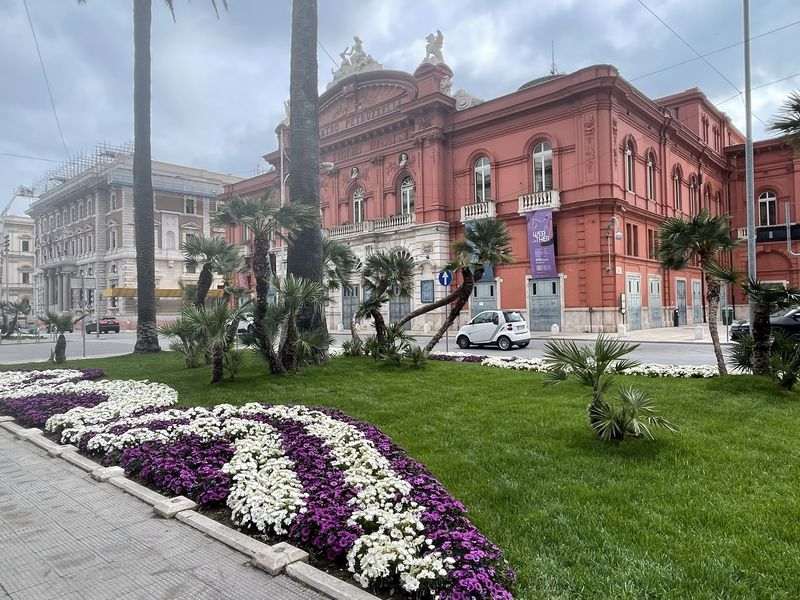
Museo Teatro Margherita
The other theater of the city, the Margarita Theater (Museo Teatro Margherita) is one of the most characteristic and symbolic monuments of the town. Visible in the distance both from the beach and along Corso Vittorio Emanuele II (in the city center), the theater rests its foundations directly on the sea of Bari. Its history is very fascinating and begins in 1910, which coincides with the birth of the Petruzzelli Theater. It was a construction made entirely of wood, which, however, just a year later, was destroyed by a fire whose causes remain unknown to this day. The structure was reconstructed in 1914, this time in reinforced concrete, but with the foundations always in the sea, thus making history not only because it was the first reinforced concrete structure built in Bari, but mainly because it was the only building in Europe built on stilts! Today it is a place for meeting and discussing issues related to contemporary art, with the most famous artists of the genre choosing it for their exhibitions!
Castello Svevo
On the west side of the old town, you will find Bari's castle, known as the Swabian Castle (Castello Svevo). It was initially built by the Norman king Roger II of Sicily around 1131 AD, but was completely destroyed in 1156 and rebuilt by Frederick II of Hohenstaufen in 1233 in the Norman-Swabian style. Over the centuries it had many uses after being used as a palace, a prison and a signal station, while today it functions as the city's art gallery-sculpture gallery for various temporary exhibitions. The entrance costs 4.5e.

Citta Vecchia
The old town (Citta Vecchia) of Bari is undeniably the most beautiful part of the city! It starts at the Vittorio Emanuele Gate and the bustling Piazza Mercantile and features countless cobbled alleys and uneven paths. It is a labyrinth, where time seems to have stopped, while there are also more than 40 churches! So I suggest you put your phone aside and get lost among these narrow streets, where you will see the local culture and meet authentic people! In fact, in one of these alleys, Strada delle Orecchiette, you will find dozens of old women, sitting in front of their wooden tables, using their skillful hands and creating thousands of orecchiette a day! It's a sight to behold, and you'll definitely want to buy some of them!
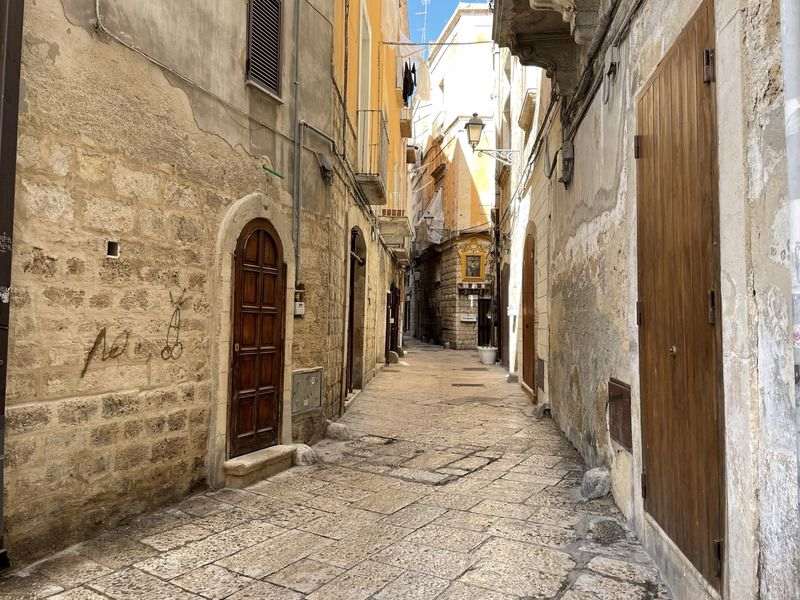
Piazza Mercantile
If we were seeking the liveliest spot in the city, this would undoubtedly be the Commercial Square (Piazza Mercantile). It is located on the east side of the city, near the port and is a meeting point for both locals and tourists. Of course, in the Middle Ages, the square was associated with small criminals and debtors, who climbed the column of Justice (Colonna della Giustizia), in order to make themselves ridiculous! Today in the square you will find attractive picturesque houses with colorful shutters and plenty of cafes and restaurants where you can sit down to drink your coffee or eat something!
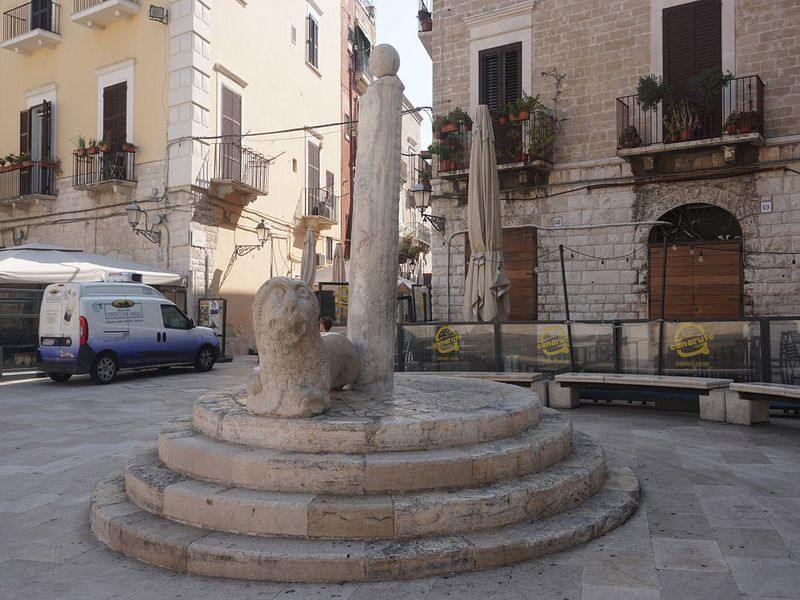
Palazzo del Sedile
Also known as the "Palace of the noble’s seats", the Palazzo del Sedile was built around 1543, but some sources mention it as early as 1400! In the Middle Ages it was the centre of administrative and political decision-making of the Bari Council of nobles, while later it was a commercial residence and the first public theatre of the city! In 1601 a fire broke out in the area, which completely destroyed the building, but it was completely rebuilt in 1604, while a large German-made clock was installed. Today, the palace is undergoing renovation, estimated to be completed in 2024 and will host artistic and cultural activities and offices of the Puglia Foundation.
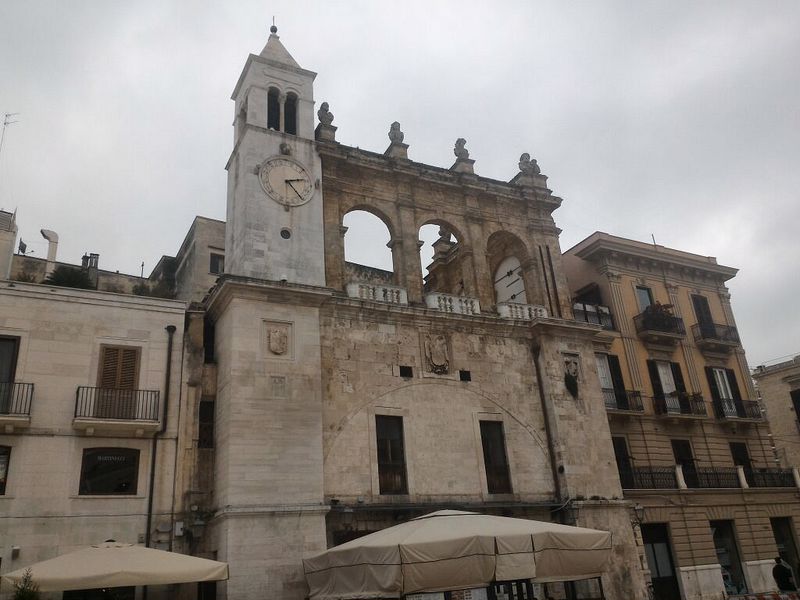
Lungomare Nazario Sauro
Bari is a seaside town, so it is definitely worth walking alongside the sea to enjoy the Mediterranean. The most beautiful spot to do it is located along the old port (Porto Vecchio), on a fantastic seaside promenade, the waterfront Nazario Sauro (Lungomare Nazario Sauro). It starts from the dog park (Parco per Cani) and extends for about 1000 meters to the Margarita Theater! Walking there, you will admire impressive buildings, Mussolini's heritage in the city, colorful boats and locals relaxing while gazing at the endless blue, while if you visit it in the morning, you will find dozens of fishermen unloading from their vessels and selling their catch on the pier.
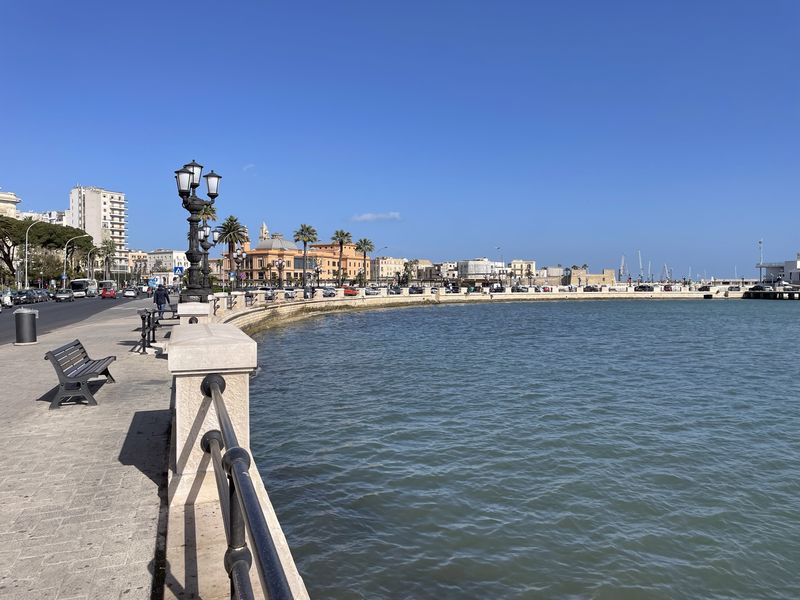
The museums
In Bari there are many museums and art spaces that deserve special attention, but there are two that stand out! The first of these is the Provincial Art Gallery (Pinacoteca Provinciale), which is located on the waterfront Nazario Sauro. It hosts a wide variety of artworks ranging from the 11th century to the 19th century, by artists of Southern Italy and Tuscany (Paolo Veronese, Giovanni Bellini and Tintoretto, etc.), centered on the Apulian school! Admission costs 3e.
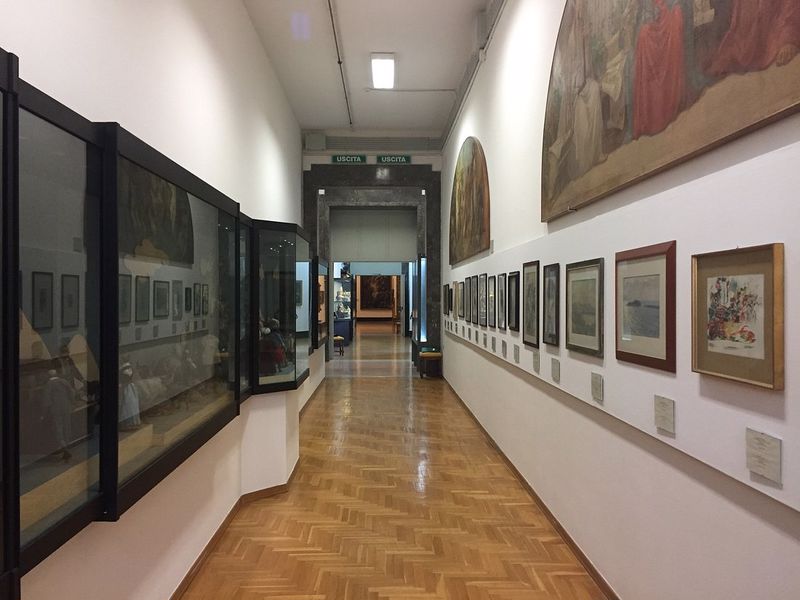
The second museum worth visiting in the city is the Archaeological Museum of Bari (Museo Archeologico di Bari), located on Via Beatillo. There you will admire more than 30,000 exhibits, such as ancient vessels of Greek and local vases, various finds coming from the city of Kanision of the 3rd century BC and a bronze statue of the god Apollo of the 5th century BC! Admission costs 5e.
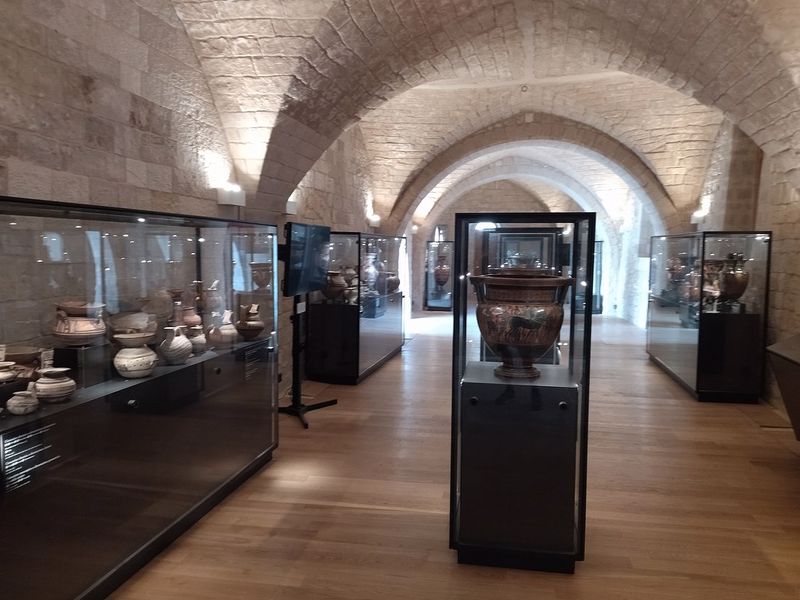
Università degli Studi di Bari Aldo Moro
Last but not least, I left the pride of the city which is none other than its university. The University of Bari "Aldo Moro" (Università degli Studi di Bari Aldo Moro) was founded in 1925 and is considered one of the ten largest in terms of student population in all of Italy, with 43,215 students! It is located near the railway station, in the modern part of the city, in a square that bears the same name. From an architectural point of view, it will impress you with its simplicity on the exterior, while internally it exudes a renaissance aesthetic that is difficult to meet elsewhere in the city!
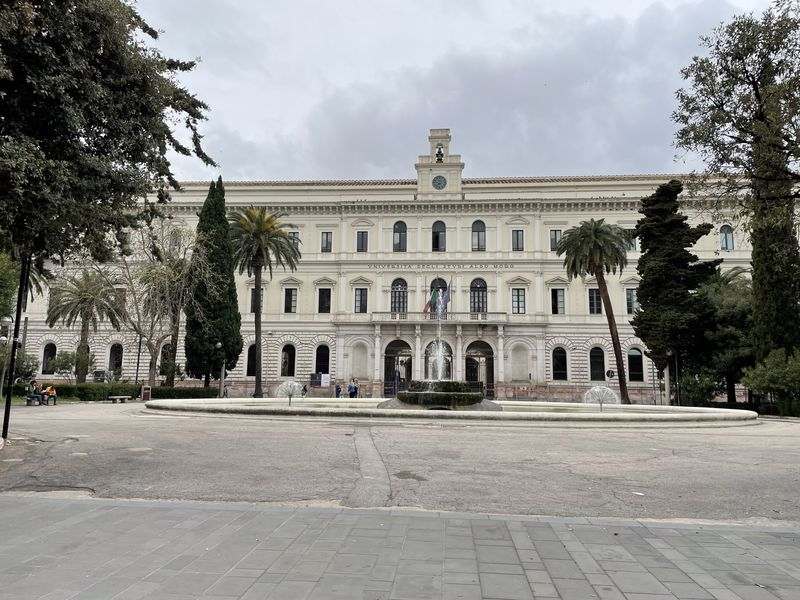
How to go
Currently, Thessaloniki is not directly connected by air to Bari, so if you wish to reach the city only by plane you should make at least one stop. The most economical and flexible option comes from Ryanair, which with proper planning can find tickets starting from 62€ return, with a stopover in Milan! Beyond that, a good solution to travel economically, within the neighboring country is the train, since the rail network is easy to use and convenient. So you could try to find a flight to another city like Naples or Lecce and from there reach Bari. Something that will definitely save you both time and money.
Where to stay
Certainly Bari is not a big city, but due to its strategic location, it is an important stop for many travelers. So there are accommodation options for all tastes and budgets. If you want to travel by train to nearby destinations then I suggest you find something close to the train station, while if you plan to stay only in the city it is good to book something in its historic center! The hotel I have to recommend is the Shl Bari City Termninal Locazione Turistica, located near the train station and is considered one of the most economical in the city!
How to move
Bari has an excellent transport system with trains and buses, covering all the lengths and widths of the city. The most common means of public transport are buses, since there are over 200 buses and 1100 stops, with the ticket costing 1.2e. Tickets must be purchased before the tobacco kiosks in the city; otherwise, you can buy them from the driver, but they are more expensive and valid for less time! On the other hand, the trains cross Bari with 4 lines, with both of them passing through the airport. Finally, regarding taxis you can find them either on the street or call them by phone, but they are relatively expensive and less used.
What to eat
Puglia is generally known for its food and wine, so in addition to the classic pasta, pizzas and ice cream, going to Bari you should try some of the dishes that are its trademark. One of them is the orecchietti (fresh pasta that looks like ears), served in different variations! Also, it is worth trying a dish based on rice and potatoes, which you accompany with mussels and the soft local cheese burrata, while the octopus burger is quite widespread! Finally, taste the famous panzarotti (salty fried calzone, stuffed with tomato, mozzarella, mushrooms, onions, anchovy or capers) and of course fresh seafood. For delicious panini and octopus burger, I recommend Mastro Ciccio, for pizza Spizzipizza and for coffee Jerome Cafe.
Useful information

In Italy we travel with a passport or a new type of Police ID, where the details are indicated in Latin characters.
In Bari the language used is, of course, Italian. But most, if not all, speak English, so ask for clarification in English.
The currency of the country is the euro.
Bari is an hour behind Greece (GMT +2).
The Greek unpaid Consulate General in Bari is located at Giovanni Amendola 172 / C, 70126 and its telephone number is +39 0805468049.
Getting to and from Bari airport is simple, as there are continuous train and bus services that will take you to the city center. The ideal solution is, of course, the train that costs 5e and the journey time is only 20 minutes, while the bus takes about 50 minutes and costs 1e.
The climate of Italy is quite similar to that of Greece, so there are mild winters and hot summers. The ideal time to visit is autumn or spring, but if you wish to visit one of the neighboring beautiful beaches then you should be in the city in the summer!
Recommended excursions → Alberobello, Matera, Monopoli, Polignano a mare

If this article seemed interesting or contributed to your quality information, then you can like my facebook page: o_thessalonikios or follow me on instagram!
Mouzakidis Pantelis








